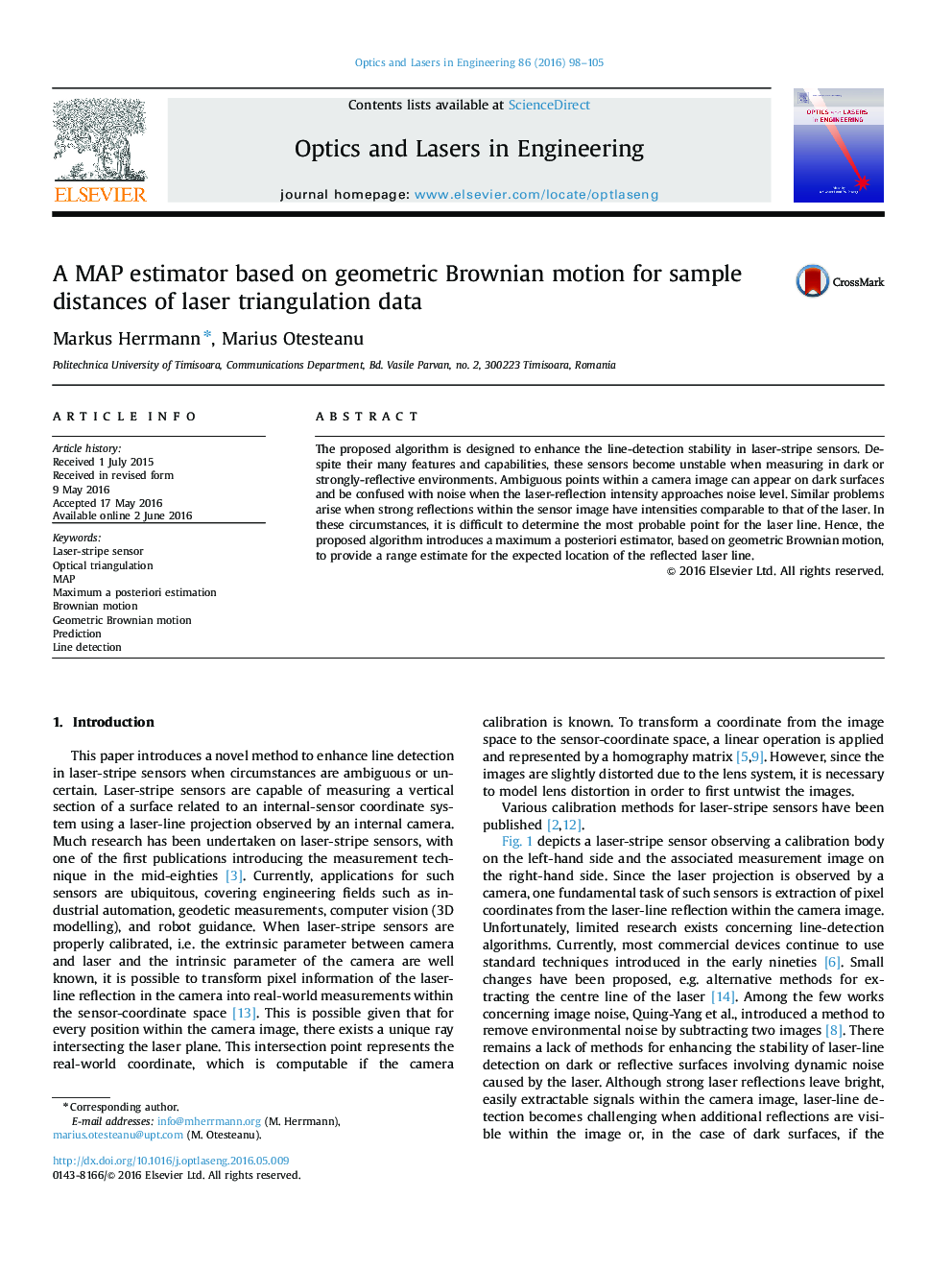| Article ID | Journal | Published Year | Pages | File Type |
|---|---|---|---|---|
| 734990 | Optics and Lasers in Engineering | 2016 | 8 Pages |
•Improves line detection for laser-stripe sensors on dark and glossy surfaces.•Prediction of measures within the range of 0.3 mm.•Performs 10 times more accurate than ordinary threshold methods.•Good performance, ideal for embedded system implementation.
The proposed algorithm is designed to enhance the line-detection stability in laser-stripe sensors. Despite their many features and capabilities, these sensors become unstable when measuring in dark or strongly-reflective environments. Ambiguous points within a camera image can appear on dark surfaces and be confused with noise when the laser-reflection intensity approaches noise level. Similar problems arise when strong reflections within the sensor image have intensities comparable to that of the laser. In these circumstances, it is difficult to determine the most probable point for the laser line. Hence, the proposed algorithm introduces a maximum a posteriori estimator, based on geometric Brownian motion, to provide a range estimate for the expected location of the reflected laser line.
